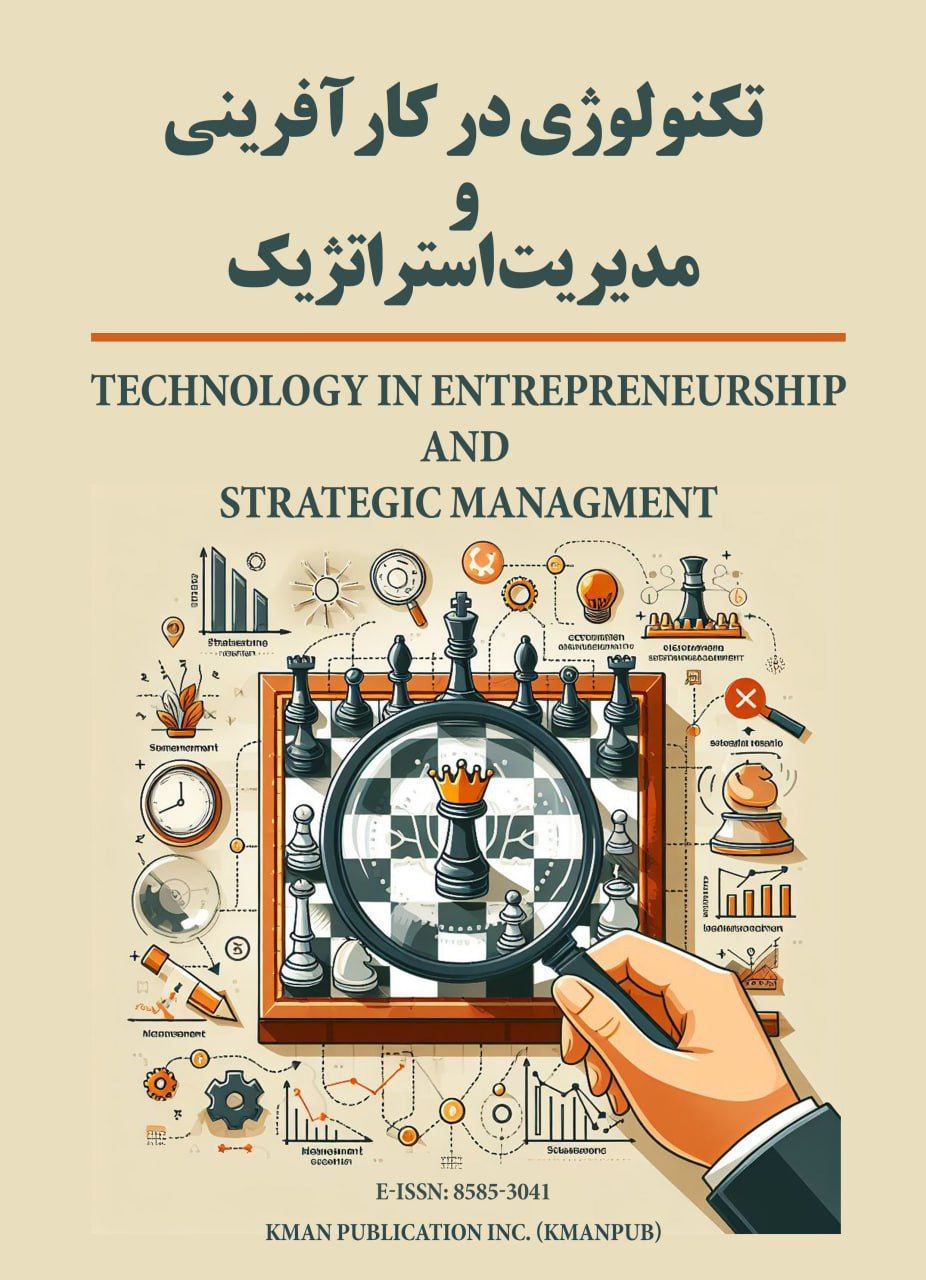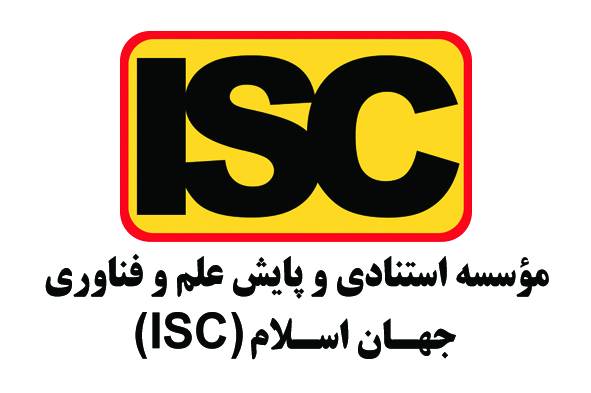بررسی پیشایندها و پسایندهای تجاریسازی نوآوریها در صنعت مواد منفجره تجاری: یک رویکرد آمیخته
کلمات کلیدی:
تجاریسازی نوآوریها, صنعت مواد منفجره تجاری, گراندد تئوری, معادلات ساختاریچکیده
ﺗﻮﺟﻪ ﺑﻪ اﻫﻤﻴﺖ ﻣﻮﺿﻮع تجاریسازی و از طرفی ﺑﺎ وﺟﻮد ﻣﻮاﻧﻊ در تجاریسازی ﻣﺤﺼﻮﻻت و ایدههای خلقشده از قبیل ﻣﻮاﻧﻊ ﻣﺎﻟﻲ، دوﻟﺘﻲ و غیره در حوزه مواد شیمیایی به ویژه مواد منفجره تجاری ﺗﻮﺟﻪ و تأکید ﺑﻴﺸﺘﺮ ﺑﺮ فرایند تجاریسازی در ﺻﻨﺎﻳﻊ ﻛﺸﻮرﻣﺎن اﻣﺮی ﻣﻠﺰم میباشد. هدف اصلی تحقیق حاضر، ارائه مدل تجاریسازی نوآوریها در صنعت مواد منفجره تجاری با لحاظ پیشایندها و پیامدها میباشد. پژوهش از نوع کاربردی و به صورت آمیخته انجام شده است. در بخش کیفی از تئوری داده بنیاد و در بخش کمّی از تکنیک معادلات ساختاری استفاده شده است. دادهها از طریق مصاحبه نیمهساختار یافته و پرسشنامه محققیافته جمعآوری شده است. نمونهگیری نظری تا رسیدن به اشباع مقولهها ادامه یافت. با 10 نفر از بهرهبرداران مصاحبه صورت گرفت. نتایج حاصل نشان داد شرایط علّی و موثر بر تجاریسازی نوآوری با هفت سازهی دسترسی به بازارهای بین المللی، رقابت پذیری، توسعه افقی و عمودی محصولات، ایجاد ارزش افزوده اقتصادی، استفاده ظرفیتهای بالقوه، پیشران فناوریهای مواد منفجره و پاسخ به نیاز گسترده مصرف مواد منجره تجاری، تاثیر مثبت و معنیداری دارد. شرایط دخیل و شرایط زمینهای همگی بر تدوین استراتژییهای اثر معنیداری دارد که منجر به پیامدهایی برای صنعت مواد منفجره تجاری خواهد شد.
دانلودها
مراجع
Amiri, S., & Rezaee, B. (2022). The Factors Affecting the Technology Commercialization in Knowledge-Based Companies (Case Study: Kermanshah Province). Karafan Quarterly Scientific Journal, 19(2), 337-362. https://karafan.tvu.ac.ir/article_131866.html?lang=en
Bandarian, R. (2009). Marketing and Commercializing New Technologies: Steps, Facilitating Factors, and Key Success Factors. Technology Growth Quarterly(19). http://www.roshdefanavari.ir/en/Article/13930604162531811
Breschi, S., & Malerba, F. (1997). Sectoral innovation systems: technological regimes, Schumpeterian dynamics, and spatial boundaries. In Systems of Innovation: Technologies, Institutions and Organizations (pp. 130-156). https://www.taylorfrancis.com/chapters/edit/10.4324/9780203357620-7/chapter-six-sectoral-innovation-systems-technological-regimes-schumpeterian-dynamics-spatial-boundaries-stefano-breschi-franco-malerba
Cooper, R. G. (2019). The drivers of success in new-product development. Industrial Marketing Management, 76, 36-47. https://doi.org/10.1016/j.indmarman.2018.07.005
Czarnitzki, D., Hussinger, K., & Schneider, C. (2011). Commercializing academic research: the quality of faculty patenting. Industrial and Corporate Change, 20(5), 1403-1437. https://doi.org/10.1093/icc/dtr034
Dehghan Dehnavi, H., Nayebzadeh, S., & Zarrinabadi, E. (2011). Investigating Factors Affecting the Development of New Products (NPD) in the Textile Industry. Third National Conference on Textiles and Clothing, Yazd.
Edwards-Schachter, M. (2018). The nature and variety of innovation. International Journal of Innovation Studies, 2(2), 65-79. https://doi.org/10.1016/j.ijis.2018.08.004
Ghayabi, S., & Ghayabi, M. M. (2020). Markets in the Commercialization Process of Knowledge-Based Companies' Products and Examining the Role of Technology Units in Science and Technology Parks. Third International Conference on Modern Strategies in Management, Accounting, Economics, and Banking with a Business Growth Approach, Tehran.
Kahn, K. B. (2013). The PDMA handbook of new product development. Wiley. https://doi.org/10.1002/9781118466421
Karlsson, M. (2004). Commercialization of Research Results in the United States-an Overview of Federal and Academic Technology Transfer. https://www.tillvaxtanalys.se/download/18.62dd45451715a00666f1bc67/1586366161531/Commercialization%20of%20research%20results%20in%20the%20United%20States-04.pdf
Mai, Y., Zhang, W., & Wang, L. (2019). The effects of entrepreneurs’ moral awareness and ethical behavior on product innovation of new ventures. Chinese Management Studies, 13(2), 421-446. https://doi.org/10.1108/CMS-10-2017-0302
Moein, S. R., & Jalodar, Z. (2016). Creativity and Innovation and the Use of Human Resources in Increasing Productivity of Manufacturing and Industrial Organizations. Third International Symposium on Management Sciences with a Focus on Sustainable Development, Tehran.
Patience, T. H. (2024). Factors in the Commercialization of Scientific Research in Zimbabwean Universities. International Journal for Multidisciplinary Research, 6(1). https://doi.org/10.36948/ijfmr.2024.v06i01.13081
Rasmussen, E., Moen, Ø., & Gulbrandsen, M. (2006). Initiatives to promote commercialization of university knowledge. Technovation, 26(4), 518-533. https://doi.org/10.1016/j.technovation.2004.11.005
Safarzad, H., Azma, F., Saeidi, P., & Aghajani, H. (2020). Proposing a commercialization model for knowledge-based products focusing on resilient economy policies. Strategic and Macro Policies, 8(29), 3-22. https://www.jmsp.ir/article_102269.html
Toole, A. A., & Czarnitzki, D. (2010). Commercializing science: is there a university "brain drain" from academic entrepreneurship? Management Science, 56(9), 1599-1614. https://doi.org/10.1287/mnsc.1100.1192
Valderrama, T. G., Sánchez-Ortiz, J., & Mulero-Mendigorri, E. (2023). Knowledge Production And commercialization From R&D: The Pharmaceutical Sector. Management Decision, 61(13), 222-247. https://doi.org/10.1108/md-05-2022-0567
Woodfield, P. J., Ooi, Y. M., & Husted, K. (2023). Commercialisation patterns of scientific knowledge in traditional low-and medium-tech industries. Technological Forecasting and Social Change, 189, 122349. https://doi.org/10.1016/j.techfore.2023.122349











